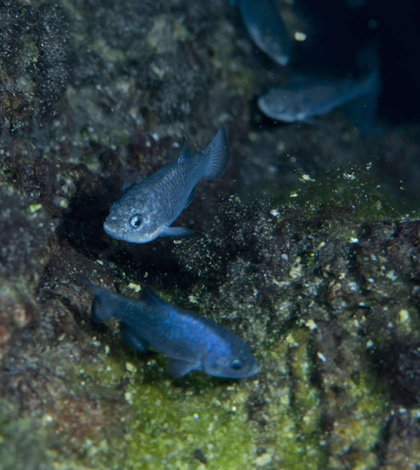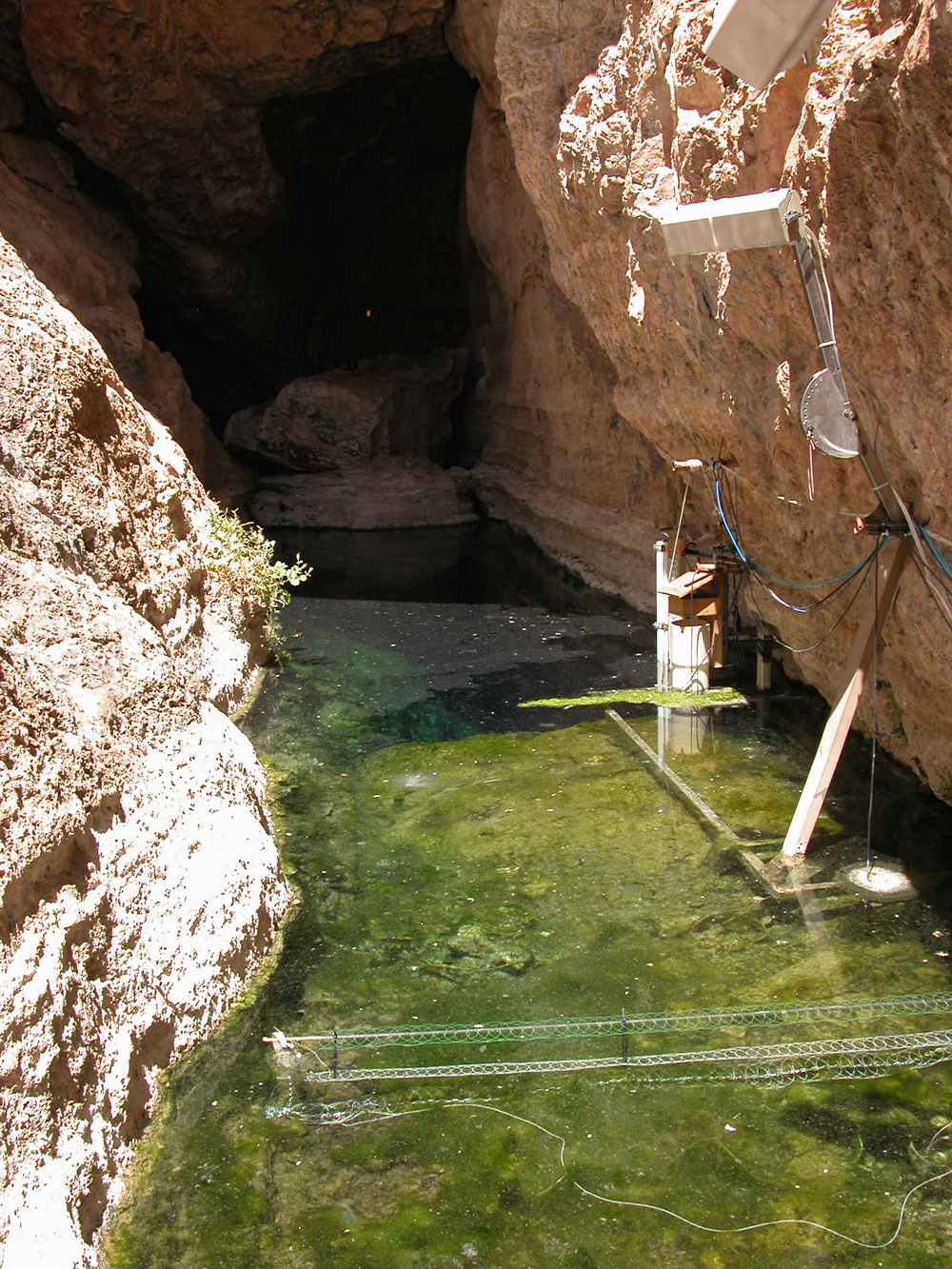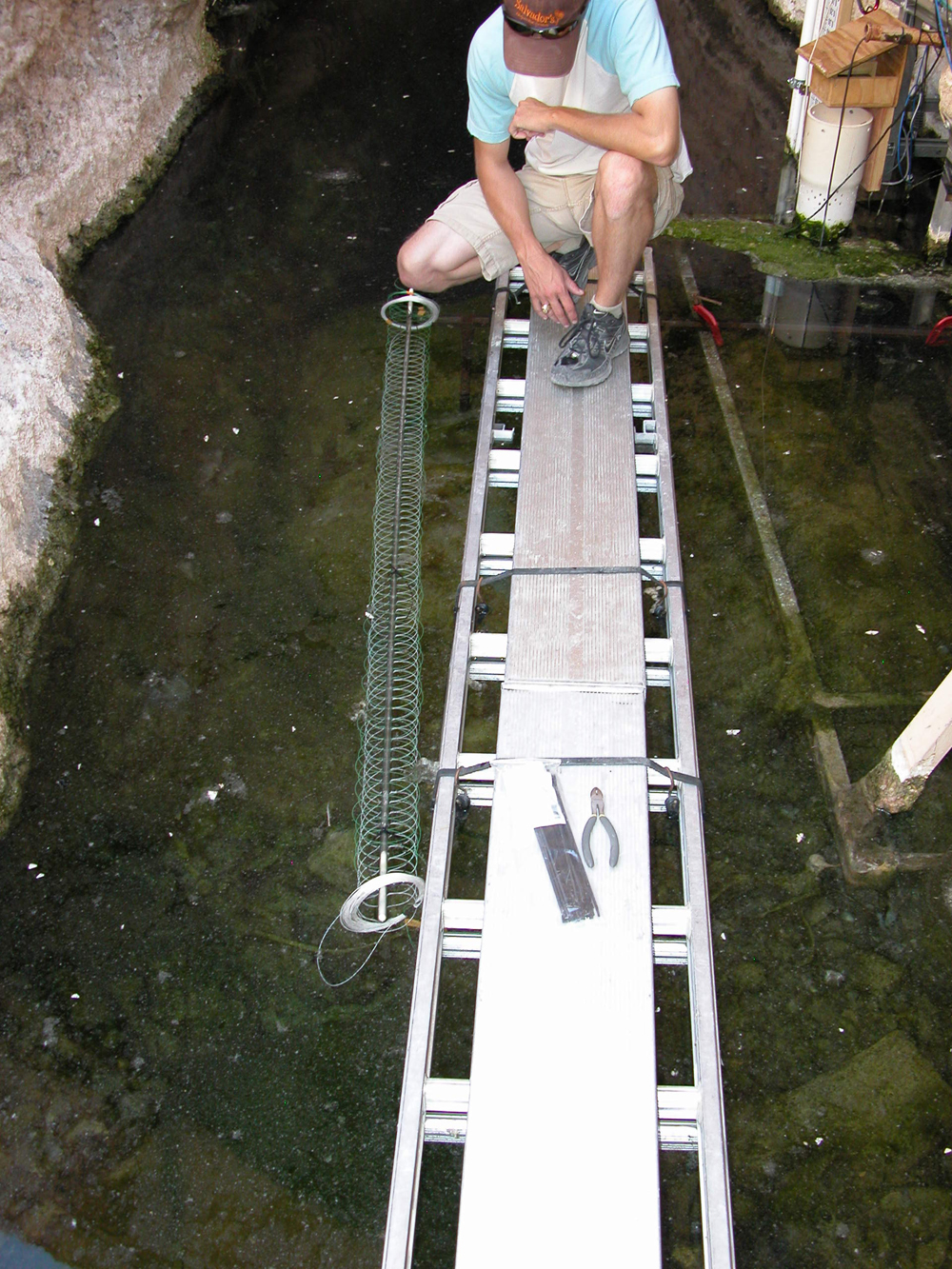Devils Hole pupfish threatened by warming water temperatures in its tiny habitat

Devils Hole pupfish (Credit: Olin Feuerbacher)
The future of the endangered Devils Hole pupfish — all 92 of them — depends on water temperatures on a 180-square-foot rock shelf in the Mojave Desert that makes up the only spawning and feeding habitat the species has ever known. A new study suggest that, by 2050, a warming climate could knock two weeks off of the shrinking window of optimal conditions for juveniles to hatch and grow into adults each year.
“That window keeps getting shorter as you move farther and farther into the future,” said Mark Hausner, post-doctoral fellow with the Desert Research Institute and lead author of the study.
The inch-long, iridescent blue Devils Hole pupfish lives only in Devils Hole, a small water-filled cavern that opens into a deep underground pool. Though fish have been found as deep as 80 feet down the cavern, they do their feeding, spawning and rearing on a small, shallow rock shelf where the the water averages just over a foot deep.
The population goes through an annual peak-and-trough cycle, which historically supported 400-600 fish after the hatchlings grew to adults and 200-400 fish after the short-lived species died back. But the Devils Hole pupfish has been in a mysterious decline since the ’90s, and scientists counted only 35 pupfish in spring 2013 and 92 in spring 2014.

The shallow shelf of Devils Hole with a distributed temperature sensor. The shallow shelf is used daily by the pupfish for spawning and foraging. (Credit: Mark Hausner)
Scientists have floated a few possible reasons for the decline, including inbreeding and shifts in the food web. And since the consistently warm water in Devils Hole is already at the upper end of the temperature range thought to be suitable for pupfish, it seems likely that climate change has played a role in the decline and could continue to do so in the future.
To test that hypothesis, Hausner and other scientists took detailed water temperature and circulation measurements in Devils Hole and built a numerical model that tied those measurements to air temperature data. By plugging in both historical data and air temperatures projected for the next century, the researchers could get an idea of how water on the shallow shelf has changed and will continue to respond to climate change.
The results show that warming air temperatures have already cut a week from the window of ideal growth conditions, which stood at 11 weeks back when the species had a stable population. The window is the ideal time for egg and larval development between late February when enough food enters the system, and sometime in April when the water grows too warm. By mid-century, rising temperatures could shorten the window to 9 weeks.

Co-author Bailey Gaines of Death Valley National Park installing temperature sensors on the shallow shelf of Devils Hole. (Credit: Mark Hausner)
That shrinking window is stressful for the pupfish because their short lives make adding more fish to the population each year all the more important for the species to persist. And when it comes to adapting to climate change, Hausner said, animals have three options: migrate, adapt or die.
“The Devils Hole pupfish can’t migrate because there is no surface connection to any other water body,” he said. “So they’re into the adapt or die stage.”
But they do have some help. Hausner said a very active management team is working to preserve the pupfish and is already working on providing food supplements and shade structures. The results of the study could inform future decisions on how best to take care of this and other species. Devils Hole is within the Ash Meadows National Wildlife Refuge, which hosts similar small habitats that support three other endangered fish species.
“So you can see the effects in Devils Hole really quickly, but it’s pointing the way to what’s going to happen in the other systems in Ash Meadows.”
The study was published online ahead of print the journal Water Resources Research.
Top image: Devils Hole pupfish (Credit: Olin Feuerbacher)





0 comments